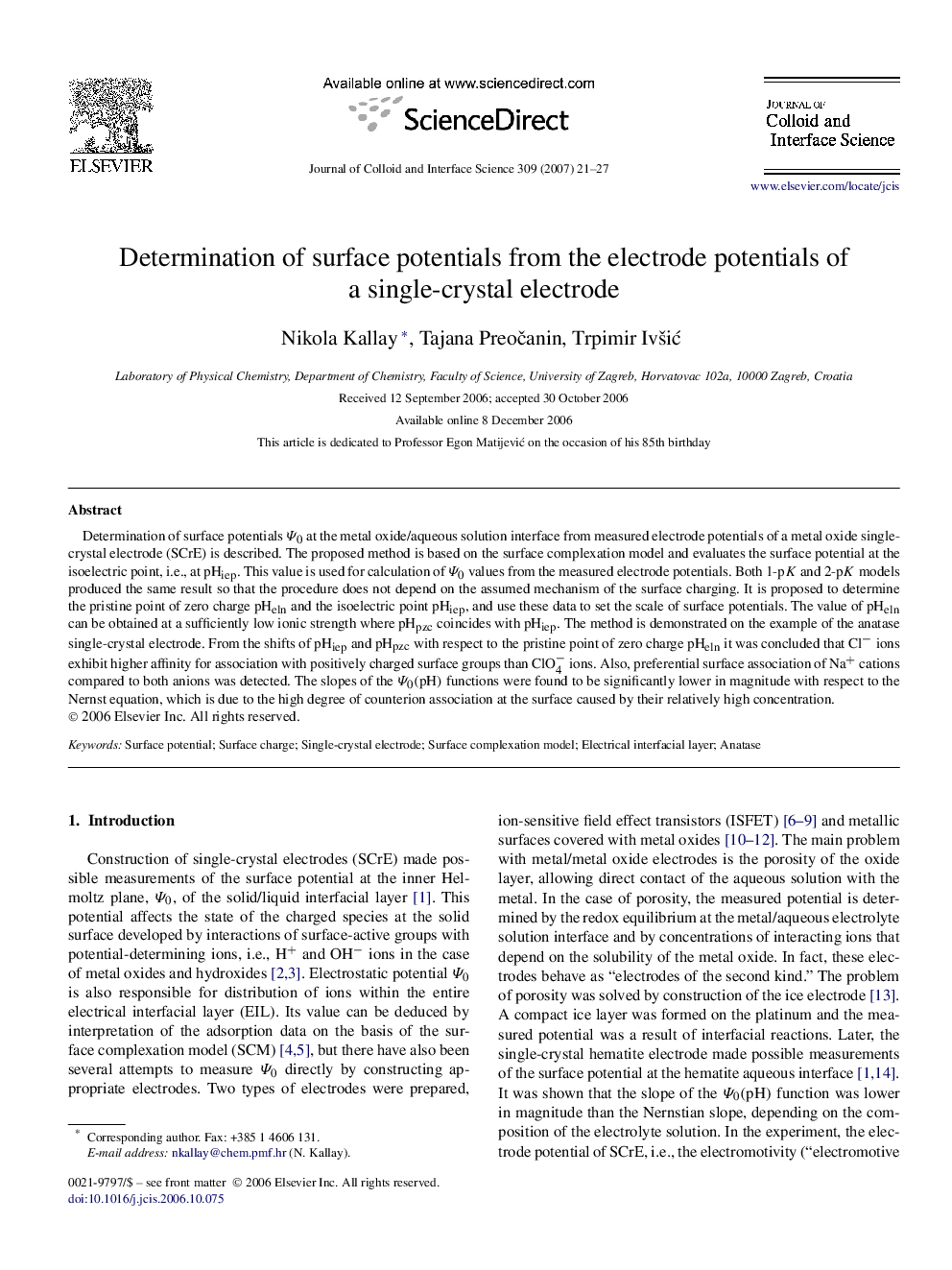| Article ID | Journal | Published Year | Pages | File Type |
|---|---|---|---|---|
| 612955 | Journal of Colloid and Interface Science | 2007 | 7 Pages |
Determination of surface potentials Ψ0Ψ0 at the metal oxide/aqueous solution interface from measured electrode potentials of a metal oxide single-crystal electrode (SCrE) is described. The proposed method is based on the surface complexation model and evaluates the surface potential at the isoelectric point, i.e., at pHiep. This value is used for calculation of Ψ0Ψ0 values from the measured electrode potentials. Both 1-pK and 2-pK models produced the same result so that the procedure does not depend on the assumed mechanism of the surface charging. It is proposed to determine the pristine point of zero charge pHeln and the isoelectric point pHiep, and use these data to set the scale of surface potentials. The value of pHeln can be obtained at a sufficiently low ionic strength where pHpzc coincides with pHiep. The method is demonstrated on the example of the anatase single-crystal electrode. From the shifts of pHiep and pHpzc with respect to the pristine point of zero charge pHeln it was concluded that Cl− ions exhibit higher affinity for association with positively charged surface groups than ClO−4 ions. Also, preferential surface association of Na+ cations compared to both anions was detected. The slopes of the Ψ0(pH)Ψ0(pH) functions were found to be significantly lower in magnitude with respect to the Nernst equation, which is due to the high degree of counterion association at the surface caused by their relatively high concentration.
Graphical abstractFigure optionsDownload full-size imageDownload as PowerPoint slide
